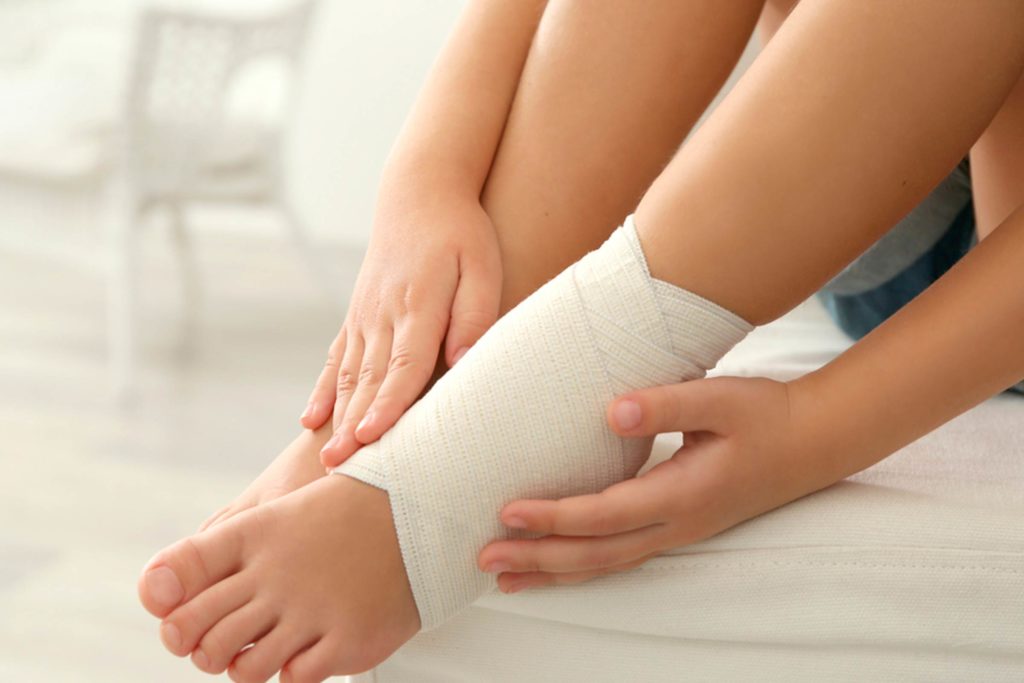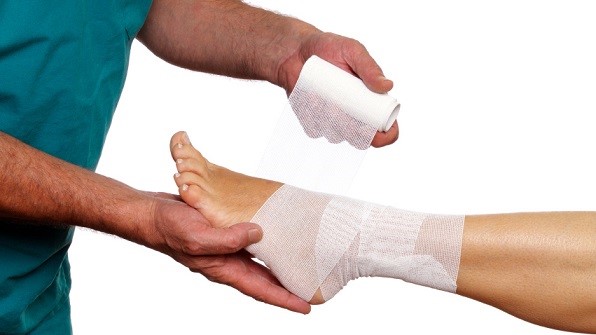Any sportsperson will attest that an ankle sprain is one of the most likely sports injuries to occur. Most of these injuries are ligament damages that result due to the ankle rolling inwards under the person’s body weight. Swelling and/or bruising may occur, which sometimes can take around 2 days to manifest. Depending on how severe the sprain is, it can be graded 1, 2 or 3.

How Long Does a Sprained Ankle Take to Heal?
The time an ankle sprain takes to heal depends entirely on the grade of the sprain. Usually, however, sprains heal anywhere between 5 days to 12 weeks. Here is a better understanding of the time taken by a sprained ankle to heal:
Grade 1
Recovery time: within 5 and 14 days
Sprains that happen due to ligament damage are classified under Grade 1. The sprain is the quickest to heal as it is the least severe in its damage. Patients might experience mild pain, stiff joints, swelling and slight discomfort
Grade 2
Recovery time: within 4 and 6 weeks
Sprains that happen due to partial ligament tearing are classified under Grade 2. Patients might experience moderate pain, difficulty in moving about, swelling, stiff joints and bruising. One might require the use of a splint to make movement difficult, so that the ankle heals better.
Grade 3
How long does a sprained ankle take to heal when it’s Grade 3? Well, patients usually heal within 8 and 12 weeks.
Sprains that involve the complete tearing of the ligament are classified under Grade 3. Patients have to undergo massive amounts of pain during the sprain, which gradually subsides (comparatively) after a few hours. Severe swelling, bruising and inability to walk are accompanied with this sprain. Surgery is rarely advised to regular people – it’s more common among athletes.
Note
Apart from the grade of the sprain, one’s healing factor also depends on the capability of one’s doctor, the treatment and/or medications they provide, along with the capability of the physical therapist involved (if at all).
How to Speed Up Recovery
Self-Care at Home
Self care at home can easily be summed in one word - R.I.C.E or Rest, Ice, Compression, Elevation.
- Rest: This one’s given, especially if your sprain is of a Grade 2 or 3. Bed rest is advised, along with taking leave from school, office or other duties that force you to put unnecessary pressure on your ankle.
- Ice: Until the swelling reduces (or the first 3 days – whichever is sooner), ensure you treat your ankle for at least 15 minutes with an ice pack. Do this every 2 hours. After the swelling has subsided, you may continue using ice packs (at a lesser frequency) or you may shift to contrast bath, even though there isn’t conclusive scientific evidence supporting their use.
- Compression: A compression, preferably made of elastic, should be worn for a minimum of 24 hours after your injury. Ensure that your bandages are tight enough to stay put, but not too tight to increase your swelling, increase your pain or make your ankle go numb. If your sprain is severe, then your doctor may advise you to wear a brace.
- Elevation: This is an important step when discussing how long does a sprained ankle take to heal. When you’re resting in your bed, it’s best to keep your ankle at an elevated position. Ensure you do this for a minimum of 3 hours every day in order to decrease your bruising and swelling.
Note
If you haven’t visited a doctor, then it would be best to take medicine that can easily be bought at the local pharmacy without a doctor’s note. Make sure you read all the instructions carefully and consume the correct dosage.
Rehabilitating Your Sprained Ankle
Now that you know how long does a sprained ankle take to heal, here are some tips that will help rehabilitate your ankle:
- Always ensure you are wearing some form of support or the other (braces, hiking boots or air stirrups) to provide additional support to your torn/damaged ankle ligament.
- For very severe pains (Grade 3), you might be advised to make use of crutches in order to move about. Keep using them till your doctor advises otherwise.
- Wear the support for a few days (or even weeks) after the sprain has healed in order to prevent your previous injury from re-opening.
- Remember that those who experience repeated ankle injuries (like sports people) can develop permanent ankle weakness and pain.
Rehabilitation Exercises

Exercises are advised as they strengthen the muscles of your ankle. They also keep instability and chronic pain at bay. For Grade 1 sprains, rehab exercises start immediately after the injury occurs. Support may or may not be needed in order to make the patient walk.
A doctor’s advice should always be heeded before performing any type of stretch or exercise, including their duration and when they should be performed. Having said that, here are some of the most common exercises that patients are asked to do:
- Balance exercises: These can be performed the moment you are able to walk on your ankle with little to no pain, and have shown to drastically reduce your chances of a re-injury. If you experience pain while exercising, stop immediately because you’re doing something wrong.
- Stretching exercises: Stretching of the ankle muscles (along with the other muscle groups in your body) is also often encouraged in order to keep the Achilles tendon (heel cord) flexible. Even after rehab ends, patients are advised to continue with their stretching exercises till their ankles go back to normal.
- Strengthening exercises: As the name suggests, their core function is to strengthen your ankle muscles so that they can heal up quickly. As is with balance exercises, strengthening exercises should only be performed once the pain from your injury has vanished. You should not feel pain or uneasiness while performing them.
- Range-of-motion exercises: These involve moving your ankles in every possible direction in order to get your ankle back to functioning in all directions, like it did before the injury.